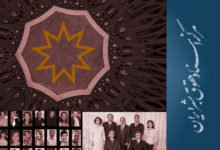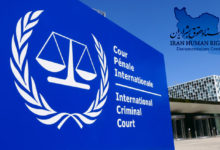Documenting Human Rights in Iran: Evidence Collection Guide
This is a short guide for collecting of human rights violations–how to spot violations, how to collect evidence, and what to do with the collected evidence. This guide is for practitioners and non-practitioners.
The principles outlined in this guide are applicable world-wide. However, this guide is mainly for use by Iranians in Iran. It enables every Iranian to participate in the collection and preservation of evidence of human rights violations by the Iranian authorities.
All information provided in this Evidence Collection Guide is for informational purposes only and does not constitute legal advice of any kind.
Documenting Human Rights Abuses In Iran: Why Do It?
Collecting and saving evidence of the Iranian government’s past and on-going human rights violations helps memorialize history for future generations so that they are aware of the mistakes of the past, and can heal and move past them. Collection of evidence of human rights violations also supports the efforts of Iranians to hold perpetrators accountable, reform public institutions and promote transparency and respect for human rights in Iran.
The Iran Human Rights Documentation Center (IHRDC) was founded to create a collective memory by preservation of this evidence. Its website is home to the Aadel Collection—a large public database of documents relating to human rights violations in Iran. The public nature of the Aadel database makes the documentation available and accessible to anyone with access to the Internet. By making this evidence readily available, an ongoing dialogue can take place, and new approaches towards the protection of human rights in Iran can be discussed among Iranians.
IHRDC relies not just on its trained team of lawyers, investigators and researchers, but also on Iranians in Iran and around the world to collect evidence. Each and every Iranian can contribute to this collective memory by documenting historical and on-going human rights violations that have affected them, their families, and their fellow citizens.
What are human rights?
What is a human rights violation?
Human rights are best described as the inalienable and universal rights possessed by all individuals regardless of race, color, sex, language, religion, political or other opinion, national or social origin, property, citizenship, birth or other status. Respect and recognition of these rights form the foundation of freedom, justice and peace in the world.
Human rights are enshrined in international covenants, treaties and agreements including the Universal Declaration of Human Rights that was adopted by the U.N. General Assembly in 1948. One of the most important documents is the International Covenant on Civil and Political Rights (ICCPR). Iran signed and ratified the ICCPR and the Iranian government is obligated to comply with its provisions.
Some of the most fundamental human rights are described on the next several pages.
Every person has the human right to move within and to leave Iran.
Article 12 of the ICCPR provides that every person has the right to liberty of movement, and to choose his or her residence.
This means that government authorities may not arbitrarily:
- banish a political activist to a location far from his or her home
- prevent activists from leaving or returning to Iran
Every person has the human right to privacy.
Article 17 of the ICCPR ensures that no one shall suffer arbitrary or unlawful interference with his or her privacy, family, home, or correspondence—in essence, it can be viewed as the right to dignity.
- This means that government officials may not:
- arbitrarily search private homes without search warrants
- confiscate personal property during warrantless searches
- conduct surveillance of telephone and email correspondence without cause or warrant
- arrest or harass family members of detainees for the purpose of coercing confessions from the detainee
Every person has the human right to freedom of thought, conscience and religion.
Article 18 of the ICCPR provides that this includes the right to adopt a religion or belief of one’s choice and to practice that religion or belief.
This means that government authorities may not:
- ban Baha’is from practicing their religion
- discriminate against Baha’is
- discriminate against people of other faith
- arrest and convict individuals because they converted from Islam to another faith
Every person has the human right to hold and express his or her own opinion.
Article 19 of the ICCPR provides that this right includes the freedom to seek, receive and impart information and ideas through all mediums, including written, oral, and artistic.
This means that government authorities may not:
- arrest and imprison journalists and web bloggers for distributing ideas with which the government disagrees
- violently attack peaceful demonstrators
- restrict Internet access, thereby denying Iranians the freedom to seek and disseminate information and opinions
Every person has the human right to peacefully assemble.
Article 21 of the ICCPR provides that this right may only be limited under the law when necessary in the interests of national security, public safety or to protect the rights of others.
This means that government authorities may not:
- attack or arrest people peacefully gathered to demonstrate their disagreement with government actions
- arbitrarily deny demonstration permits
Every person has the human right to associate with whomever they wish.
Article 22 of the ICCPR provides that this includes the right to form and join trade unions.
This means that government authorities may not:
- prevent people from gathering to discuss minority religious beliefs, women’s rights, human rights or politic
- prevent people from forming or joining trade union
Every person has the human right to liberty and security of the person.
Article 9 of the ICCPR provides that no one shall be arbitrarily arrested or detained. It also provides that a person who is charged with criminal violations must see a judge promptly and is entitled to a trial within a reasonable time. A person who was unlawfully arrested or detained has the right to compensation.
This means that government authorities cannot arbitrarily:
- arrest and detain demonstrator
- arrest, without warrants, and detain civil and political activist
- detain people for days, weeks, months or years without charging them or holding a trial before a judge
Every person has the human right to life.
Article 6 of the ICCPR states that no one shall be arbitrarily deprived of his or her life. It also provides that in countries that have not abolished capital punishment—like Iran—the death penalty should be imposed only for the most serious crimes. The sentence must be rendered by a competent court. A death sentence cannot be carried out on pregnant women, or imposed for crimes committed by people who were younger than 18 at the time they committed the crime.
This means that government authorities may not:
- kill peaceful demonstrators
- execute people for crimes such as drug smuggling and adultery
- execute political prisoners without trial
- stone anyone to death
Every person in detention has the human right to be treated humanely and to be free from torture.
Article 7 of the ICCPR provides that no person shall be subjected to torture or cruel, inhuman or degrading treatment or punishment. Article 10 provides that detainees shall be treated with dignity.
- This means that government authorities may not:
- house accused and convicted detainees together
- house children with adults
- house detainees in unsanitary conditions
- keep detainees in solitary confinement for long periods of time
- deny medical care to detainees
- whip, beat, strangle, or rape detainees
- subject detainees to mock execution
Every person has the human right to be equal before the courts.
Article 14 of the ICCPR provides that every criminal defendant has the right to a fair and public hearing by an independent and impartial tribunal. It also provides that every defendant has the right to be presumed innocent until proven guilty and the right to minimal guarantees of fairness.
- This means that government authorities may not:
- hold trials in prisons that are not open to the public
- prevent defendants from being represented by the attornies of their choice
- prevent attorneys from representing their clients
- prevent attorneys from visiting or speaking with their clients
- convict a person based on a forced confession
- hold criminal trials when the defendant is not present
Documenting Human Rights Abuses In Iran: Collection of Evidence
The four main types of evidence are real, demonstrative, documentary and testimonial.
Real Evidence
“Real” evidence is physical evidence – objects that were actually involved in the situation or event. For example, if a protestor was shot during a demonstration, pieces of “real” evidence might include:
- the shirt that s/he was wearing at the time that became stained with blood due to the injury
- the gun used to shoot the demonstrator
- bullets retrieved from the scene
Demonstrative Evidence
“Demonstrative” evidence is evidence that represents something else. This can include maps, charts, graphs, illustrations, models, drawings, etc. Examples include:
- a map of a prison ward drawn by a former prisoner
- a diagram of the place where a demonstrator was beaten by security force
Documentary Evidence
“Documentary” evidence is evidence that is in the form of original documents or copies of original documents. This can include government orders, memoranda, correspondence, judicial documents, hospital charts, medical practitioner notes, bank records, school records, power of attorney agreements, diaries, photographs and videos. Examples include:
- A summons sent to a human rights activist to report for interrogation at Tehran’s Tracking Office
- Medical records showing that a prisoner suffered from multiple head injuries and bruises while incarcerated
- Audio or video recordings of demonstrators being arrested
Testimonial Evidence
“Testimonial” evidence is a person’s own words about what they or someone else witnessed. The story can be told orally, in writing, or by video. Examples include taped audio interviews, video interviews and written testimony.
Here Are Some Things To Remember When Collecting And Processing Evidence:
Label all evidence properly
- Write down the date when the evidence was collected and any other relevant dates if not readily apparent on the face of the evidence itself.
- Indicate the source of the evidence, including relevant names and locations
Every little bit counts
All evidence related to a human rights violation should be collected, even if some pieces are missing.
- If someone tells you about how they were arbitrarily dismissed from school or work due to their religious beliefs, you do not need to find the document showing the dismissal for this evidence to be of use. The witness’s account is valuable evidence even without the document.
First-hand accounts are best
The closer the witness was to the event or problem in question, the better. First-hand accounts of events are almost always preferable to second or third hand accounts. As accounts are re-told to others, facts can get distorted.
Record the evidence trail
Wherever possible, record a description of the piece of evidence, the source, and who handled it. This is especially important with respect to physical evidence. The evidence collector should prepare a “chain of custody” declaration—that is, a written or oral attestation to the following:
- How the evidence was gathered
- How long it has been saved or stored, and the manner in which it has been secured
- How the evidence has been transferred, if at all, and the identity of all evidence handler
Documenting Human Rights Abuses In Iran:
What To Do With The Evidence?
Obviously, evidence cannot help build a collective memory if only you, the collector, holds on to it. If you know of any local non-governmental organizations (NGOs) that work on human rights issues, and conditions are safe, pass the evidence on to them. If possible, you can also contact international human rights organizations. You may submit evidence to IHRDC in a safe and secure manner on our submissions page or by mail to:
Iran Human Rights Documentation Center Submissions
129 Church Street, Suite 304
New Haven, CT 06511 U.S.A
The work of each and every Iranian in building our collective history is of the utmost importance. We hope this guide provides some useful information. Good luck and be safe!









